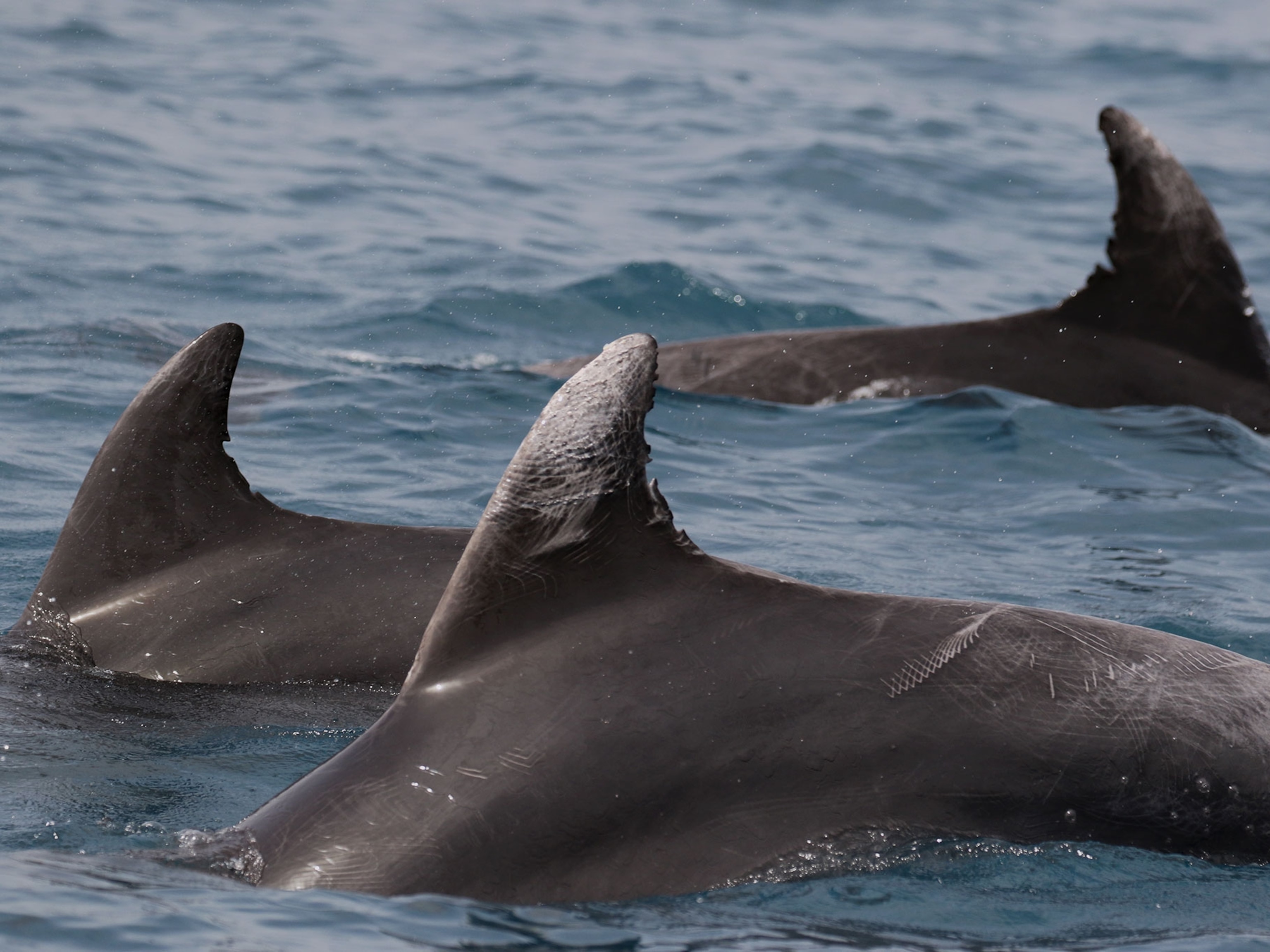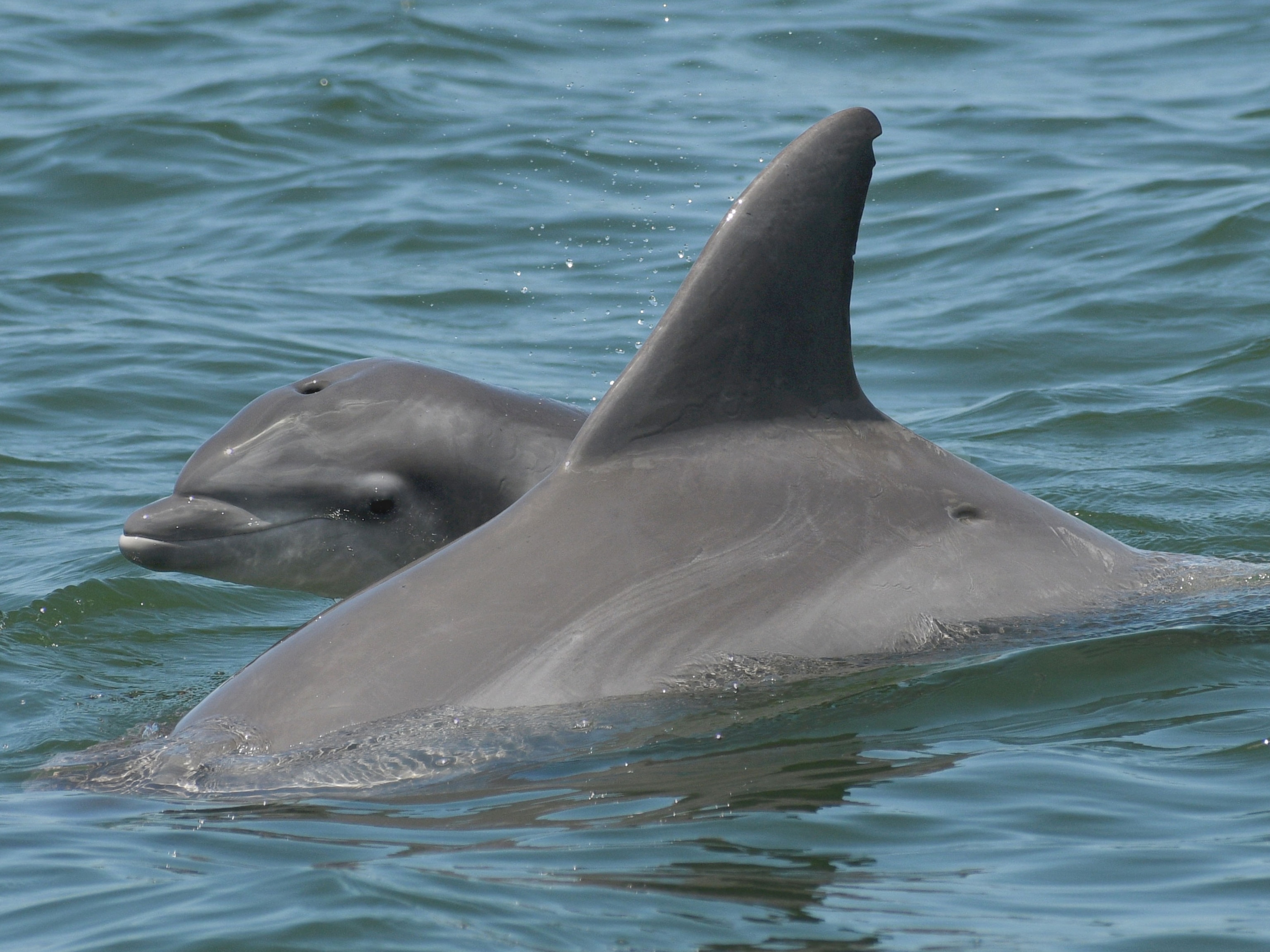Dolphins and fishermen in Laguna, Brazil, fancy the same food: plump, silver fish called mullets. But rather than compete, the two have formed an alliance.
Common bottlenose dolphins will chase schools of mullets toward shore, where a row of fishermen stand waist-deep in the water, nets in hand. The fishermen can’t see the fish through the murky water, so instead, they watch the dolphins.
When the marine mammals slap their heads or tails against the water, it cues the fishermen to cast their nets, which in turn breaks up the schools and makes individual fish easier for the dolphins to catch.
Scientists have known about this mutually beneficial relationship since the 1980s. They’ve also observed in this population of about 60 dolphins—only some of which cooperate with fishermen—that the helpers tend to hang out around other helpers.
But Mauricio Cantor, a biologist at the Federal University of Santa Catarina in Brazil, and his colleagues wondered why. (Watch these dolphins catch fish with a unique hunting strategy.)
“Are they going to the same restaurant because they like the food, or are they going as a group to the restaurant because they like the other dolphins too?” says Cantor, who co-authored a new study on the phenomenon.
His research suggests it’s the latter—the fishermen-helping dolphins form tight social bonds with each other.
Helpers stick together
For the study, Cantor and colleagues cruised around the coastal lagoons of southern Brazil, taking photos of the dolphins they encountered to identify individuals. (See 10 beautiful photos of dolphins.)
They amassed hundreds of records detailing which dolphins were fraternizing, and what they were doing together. They also used a harmless technique to collect genetic samples, which determined how and if the animals were related.
The results, published April 9 in the journal Biology Letters, revealed that the helper dolphins actively choose to spend time with one another. Whether individuals are related or members of the same age group or sex is less important; the strongest social ties form among dolphins with the same fishing technique.
“They prefer to be with each other, and not just when they’re cooperating with fishermen,” says Cantor, who is a National Geographic Explorer.
For example, these helper dolphins would travel together, playfully roll around with each other, and even nap side by side. (Read why male dolphin buddies “hold hands.”)
Can you call it culture?
Janet Mann, a dolphin expert at Georgetown University in Washington, D.C., who was not involved with the new research, believes it reveals a cultural phenomenon.
Though the definition of culture is debated, Mann says “anthropologists and psychologists agree on two basic criteria: that the behavior is socially learned, and that the behavior differentiates between groups.” (Read about culture in humpback whales.)
See Amazing Photos of Underwater Worlds
Mann studies a bottlenose population in Shark Bay, Australia, where some of the animals have taken to carrying protective sea sponges on their beaks as they scour the seafloor for prey. Her research has shown that daughters learn it from watching their mothers, and spongers form cliques with other spongers—making it a cultural tradition.
Similarly, the new study shows that Brazil’s helper dolphins prefer to mingle with other helpers. “They affiliate because of their common behavior,” says Mann, thus satisfying one of the key requirements for culture.
Whether the cooperative dolphins also learn from their peers is still unknown, but Cantor suspects they do.
“The most accepted hypothesis for how the tactic spreads among them is via social learning,” he says.






























